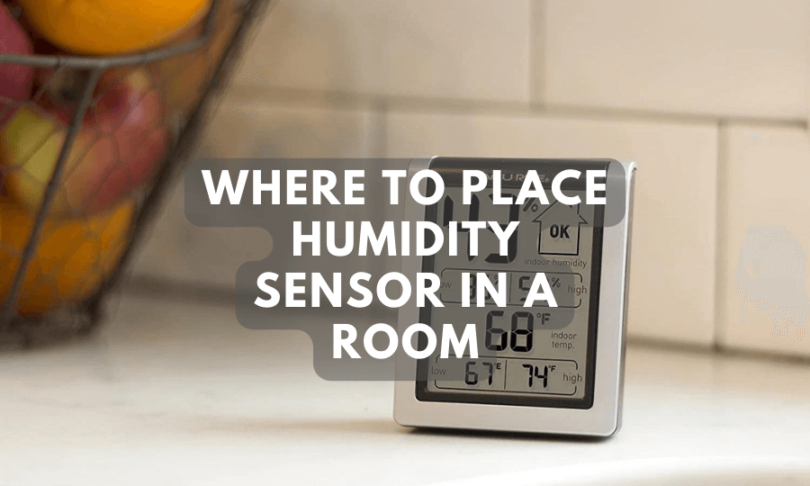Introduction:
Maintaining comfortable air conditions at home requires monitoring the moisture level in the air. This can be achieved using a hygrometer or humidity sensor. However, the key to their accurate functioning lies in their strategic placement. In this article, we explore Where to place humidity sensor in a room.
Ideal Placement of Humidity Sensors:
To ensure accurate measurements, a room humidity sensor should be installed in an elevated location, away from windows and doors. This prevents external factors from affecting the device’s precision. Suitable placements include bedrooms, kitchens, bathrooms, basements, and living rooms.
Importance of Humidity Sensors:
Monitoring the humidity level in your room is crucial to prevent issues such as condensation and mold growth. The primary function of a hygrometer is to alert you when humidity levels are too high or too low, allowing you to make necessary adjustments to maintain ideal conditions.
Benefits of Humidity Sensors:
Humidity sensors not only report temperature and humidity readings but also offer several benefits, including:
1. Reducing Health Issues:
Maintaining optimal humidity levels protects against skin irritation, dehydration, and airborne mold spores, ensuring the well-being of occupants.
2. Preventing Bacterial Growth:
Moderate humidity levels inhibit mold growth, reducing the risk of health problems associated with high exposure.
3. Keeping Pets and Plants Safe:
Proper humidity levels are essential for the health of pets and plants, preventing discomfort and promoting growth.
4. Ensuring Comfortable Air:
Maintaining the desired humidity level improves air quality, enhancing overall comfort in your home.
Types of Humidity Sensors:
Humidity sensors come in various styles, including whole-house systems, point source sensors, and smart modeling systems. Each type serves different purposes, depending on the specific requirements of the user.
Installation Tips:
When installing a humidity sensor, consider placing it in areas where humidity is a significant concern, such as basements, bathrooms, kitchens, bedrooms, and living rooms. Avoid placing the sensor near fans, heating or cooling systems, or damp rooms. Ensure proper air circulation and mount it at least 4-6 feet off the ground.
Reliability of Humidity Sensors:
While humidity sensors are generally accurate, regular calibration is necessary to handle errors and maintain reliability. Depending on the make and model, these sensors can last several years, with accuracy gradually decreasing over time.
Top Humidity Sensor Selections for 2022:
Several humidity sensors are available, each with unique features. Popular choices include the Digital Room Hygrometer The Pro TP49, Gove H5179 Wi Fi Thermometer Hygrometer, and Rite Indoor Digital Hygrometer.
Conclusion:
Choosing the right placement for a humidity sensor is crucial in ensuring accurate measurements and maintaining a comfortable home environment. Regular maintenance, calibration, and selecting a suitable sensor contribute to reliable and effective humidity monitoring.
Disclosure: We may get commissions for purchases made through links in this post.








